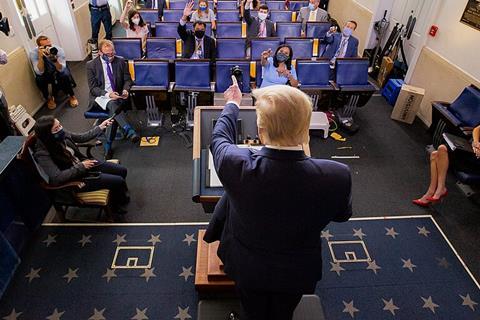The Trump adminstration has signed an Executive Order halting federal gain of function research on microbes - but does it throw the baby out with the bathwater? Virologist Simon Wain-Hobson, Emeritus Professor with the Pasteur Institute, Paris, gives his take.
The gain of function (GOF) controversy in virology has been raging for over 14 years, with previous coverage in The Microbiologist. By engineering bird flu virus into novel human pathogens, the goal was to predict the next human pandemic strains and so make preventive drugs and vaccines. They would be frozen down and scaled up big time when the pandemic raised its head, so nipping it in the bud.

Alas, poor Yorick didn’t know his virology. This was obvious from the outset to a few of us who were steeped in viral evolution. The problem was elsewhere. The US National Institutes of Health (NIH), who had funded the work, came out with a preventive strike in the form of an Op Ed in the Washington Post before virologists had even had time to learn of the work and discuss it openly. This Pax-NIH froze discussion.
READ MORE: Engineering viruses to make the world a more dangerous place
READ MORE: Much ado about microbes
The chronic illness in virology continued. With the COVID pandemic and the doubts dogging the origin of the virus – while the jury is still out, there were plans to rev up bat coronaviruses at the Wuhan Institute of Virology in ways that resemble SARS-CoV-2 – the GOF boomerang finally started coming back.
Belated U-turns
The controversy saw belated U-turns by the advocates of dangerous GOF virology back in 2012 who now recognize that the bird flu viruses H5N1 and H7N9 need continued surveillance but won’t generate future pandemics. Lol.
In addition, it became clear that the NIH wasn’t ‘following the science’ that mantra used by so many politicians concerning COVID. And readers will know that the independent UK enquiry into the COVID pandemic revealed that the government had planned for the ‘wrong pandemic’ and more.
Against this background, just last week President Trump signed an executive order halting all federal GOF research on microbes and prohibiting any new work. The text is clear, not too long, while the definition of GOF research on microbes is clear.
Linguistic trick
This matters, for the term GOF has been around for donkey’s years and much good work has emerged.
So, what was the linguistic trick to prevent useful GOF research to continue, while halting dangerous GOF research on microbes?
The Executive Order refers to ‘Dangerous GOF research’ on microbes. That simple. Common sense does have its merits.
Just to be clear, the order goes on to list seven points – effectively red lines – to help scientists distinguish GOF from Dangerous GOF research.
Safer world
As a virologist who has been campaigning against Dangerous GOF since early 2012, this is welcome news in several ways.
The world is a safer place because of it while it doesn’t hurt or even hinder US science. That was a fear, for the legislative pen can be a blunt instrument. It brings virology back to open discussion, as opposed to bending the knee to an administrative dictate.
The new NIH Director Jay Bhattacharya has been the discreet force behind this US policy reversal, which goes to show that there are still some adults in the room. He’s an advocate of scientists speaking their minds and thinking big. Wish him well, for he has a great deal to do.
Once again, there is every reason to be pleased with this US Executive Order.
Next steps
I have been been writing weekly essays on dangerous GOF research on viruses for a while. They can be found at the Biosafety Now website.
The issues affect all of us. The virus will not emerge from the US - OK, the subtitle should really have been ’US game over’ - but, without discussion and ultimately action in other countries, some researcher could walk out an infection from a lab elsewhere and precipitate an epidemic or even a pandemic.
Let’s see how the UK, EU and other nations react.







No comments yet